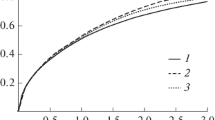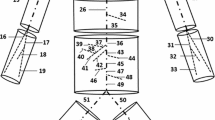Abstract
This paper describes a mathematical model developed to simulate the physical characteristics of the human thermal system in the transient state. Physiological parameters, such as local metabolic heat generation rates, local blood flow rates, and rates of sweating, must be specified as input data. Automatic computation of these parameters will be built into the model at a later date when it is used to study thermal regulation in the human.
Finite-difference techniques have been used to solve the heat conduction equation on a Control Data Corporation 1604 computer. Since numerical techniques were used, it was possible to include many more factors in this model than in previous ones. The body was divided into 15 geometric regions, which were the head, the thorax, the abdomen, and the proximal, medial, and distal segments of the arms and legs. Axial gradients in a given segment were neglected. In each segment, the large arteries and veins were approximated by an arterial pool and a venous pool which were distributed radially throughout the segment. Accumulation of heat in the blood of the large arteries and veins, and heat transfer from the large arteries and veins to the surrounding tissue were taken into account. The venous streams were collected together at the heart before flowing into the capillaries of the lungs. Each of the segments was subdivided into 15 radial sections, thereby allowing considerable freedom in the assignment of physical properties such as thermal conductivity and rate of blood flow to the capillaries.
The program has been carefully checked for errors, and it is now being used to analyze some problems of current interest.
Similar content being viewed by others
Literature
Carslaw, H. I. and J. C. Jaeger. 1959.Conduction of Heat in Solids, Second Edition, p. 201. London: Oxford University Press.
Crosbie, R. J., J. D. Hardy, and E. Fessenden. 1961. “Electrical Analog Simulation of Temperature Regulation in Man.”Fourth Symposium on Temperature, Its Measurement and Control in Science and Industry. Columbus, Ohio: In Press.
Eichna, L. W., W. F. Ashe, W. B. Bean, and W. B. Shelley. 1945. “The Upper Limits of Environmental Heat and Humidity Tolerated by Acclimatized Men Working in Hot Environments.”Jour. Ind. Hyg. Toxicol.,27, 59.
Forsythe, G. E. and W. R. Wasow. 1960.Finite Difference Methods for Partial Differential Equations, p. 104. New York: John Wiley and Sons, Inc.
Kerslake, D. McK. and J. L. Waddell. 1958. “The Heat Exchanges of Wet Skin.”Jour. Physiol.,141, 156–163.
Machle W. and T. F. Hatch. 1947. “Heat: Man's Exchanges and Physiological Responses.”Physiol. Rev.,27, 200–227.
Pennes, H. H. 1948. “Analysis of Tissue and Arterial Blood Temperatures in the Resting Human Forearm.”Jour. Appl. Physiol.,1, 93–122.
Wissler, E. H. 1961a. “Steady-State Temperature Distribution in Man.”Jour. Appl. Physiol.,16, 734–740.
Wissler, E. H. 1961b. “An Analysis of Factors Affecting Temperature Levels in the Nude Human.”Fourth Symposium on Temperature, Its Measurement and Control in Science and Industry. Columbus, Ohio: In Press.
Wyndham, C. H. and A. R. Atkins. 1960. “An Approach to the Solution to the Human Biothermal Problem with the Aid of an Analogue Computer.”Proceedings of the Third International Conference on Medical Electronics. London.
Author information
Authors and Affiliations
Additional information
This study was supported by the office of the Surgeon General, U.S. Army, under contract no. DA 49-193-MD-2005.
Rights and permissions
About this article
Cite this article
Wissler, E.H. A mathematical model of the human thermal system. Bulletin of Mathematical Biophysics 26, 147–166 (1964). https://doi.org/10.1007/BF02476835
Received:
Issue Date:
DOI: https://doi.org/10.1007/BF02476835




